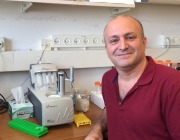Protein-Protein Interactions (PPI) mediate most of the vital processes in cells and are involved in numerous diseases. However, it is extremely challenging to make PPI drug targets. This becomes even more difficult when the interactions involve disordered protein domains.
The research in our lab focuses on using peptides for the quantitative biophysical and structural analysis of PPI in health and disease. Based on this, we develop lead peptides that modulate PPI for therapeutic purposes. We are looking at PPI in biological systems that are affected in disease, such as cancer-related pathways.

Our research strategy is:
- Studying the molecular mechanisms of protein-protein interactions in health, to understand how the particular biological system works at the molecular level
- Understanding what goes wrong at the molecular level in disease
- Developing peptide-based drugs that target protein-protein interactions to restore the biological system to its healthy conditions
We are using an interdisciplinary approach combining:
- Peptide chemistry: developing new methods for the synthesis of peptides and modified peptides
- Protein biochemistry: new methods for protein expression and purification
- Biophysical and biochemical studies of structure, interactions and activity of peptides and proteins
Our specific research Topics are:
-
Interactions of apoptosis-related proteins as a basis for drug design (Katz C. et al., J. Biol. Chem., 2012; Rotem-Bamberger S. et al., PLoS ONE, 2013; Reingewertz T. H. et al., Biochemistry, 2015; Iosub-Amir A. et al., Sci. Rep., 2015; Iosub-Amir A. et al., Chem Sci., 2019; Mayer G. et al., Chem. Eur. J., 2020)
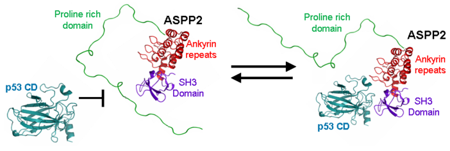 (Rotem-Bamberger et al., 2013)
(Rotem-Bamberger et al., 2013)
-
Intrinsically disordered proteins: the interplay between structured and disordered domains in proteins (Amartely H. et al., ChemComm, 2013; Faust O. et al., Chem. Comm., 2014; Reingewertz T. H. et al., Biochemistry, 2015; Amartely H. et al., Chem. Sci., 2016; Faust O. et al., Chembiochem, 2018)
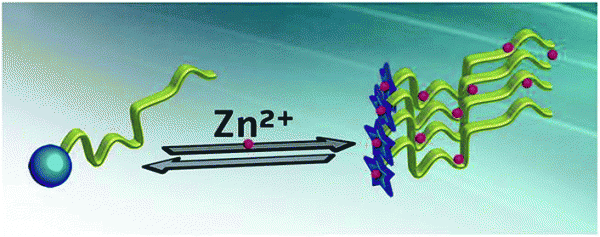 (Amartely et al., 2016)
(Amartely et al., 2016)
-
Intrinsically disordered proteins as drug targets (Mayer G. et al., Chem. Eur. J., 2020; A presentation (in Hebrew) by Assaf about IDPs)
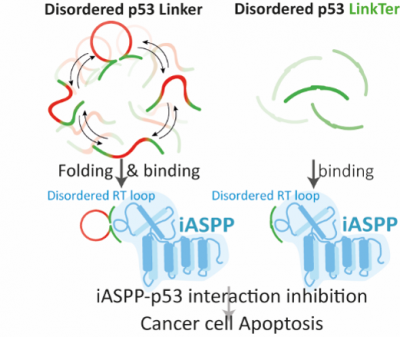 (Mayer et al., 2020)
(Mayer et al., 2020)
-
Developing new synthetic methods for efficient synthesis of modified peptides such as cyclic peptides (Hayouka Z. et al., J Biol. Chem., 2012; Chandra K. et al., Angew. Chem. Int. Ed., 2014; Chandra K. et al., Org. Biomol. Chem., 2014; Chandra K. et al., ChemMedChem, 2016; Mamidi S. et al., Front. Chem., 2020) and multiphosphorylated peptides (Mamidi S. et al., Org. Biomol. Chem., 2019; Grunhaus D. et al., Eur. J. Org. Chem., 2021)
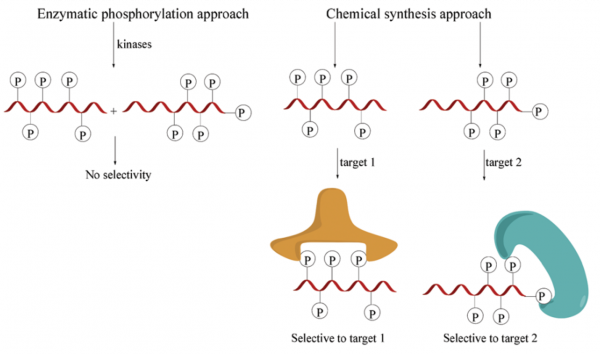 (Mamidi et al., 2019)
(Mamidi et al., 2019)
-
Developing PPI-based biosensors (Amit E. et al., Chem. Sci., 2015; Solomon O. et al., Chem. Eur. J., 2022; Joshi P. N. et al., Biosens. Bioelectron., 2022)
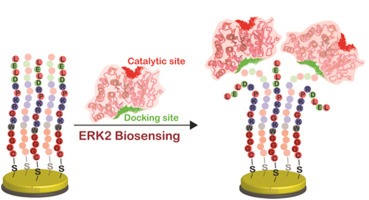 (Joshi et al., 2022)
(Joshi et al., 2022)

